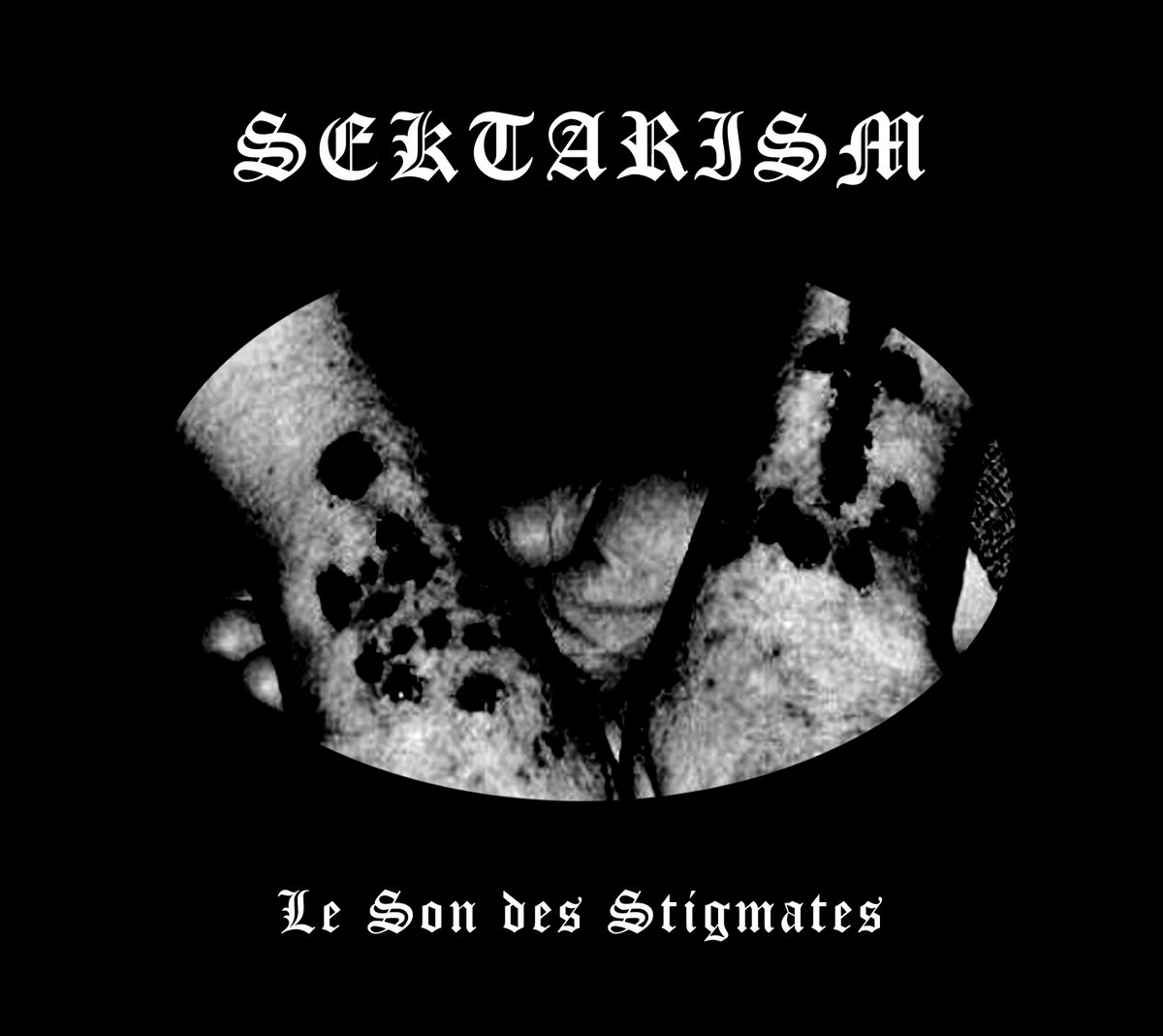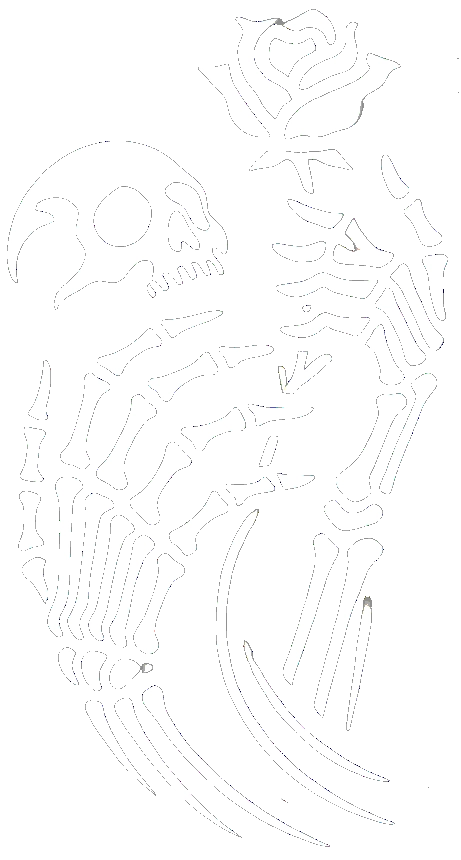Sektarism, a band that embraces self-inflicted pain and the rejection of all morality as central elements of spiritual transfiguration, focuses on the re-spiritualization of the individual through suffering. This process aims to liberate the self from societal and moral constraints. Sektarism delivers a consistent synthesis of Funeral Doom, Chaos Gnosticism, Drone Doom, and Post-Industrial, where pain and suffering pave the way to spirituality.
Spiritual Transfiguration through Pain
Suffering is not viewed as an end in itself by the band but as a transformative means of elevating the individual to a new spiritual level—an idea deeply rooted in philosophical, literary, and occult traditions.
The theme has been explored in film, such as Salò, or the 120 Days of Sodom (1975), the first two Hellraiser films (1987/1988), and The Nameless (1999). In literature and philosophy, it is impossible to overlook figures like de Sade, Kafka’s In the Penal Colony, or Nietzsche’s The Dawn. For Kafka, the torment of his protagonists serves as a destructive bridge to transcendental insight. For de Sade, suffering is a medium through which individuals overcome societal, moral, and religious conventions. Nietzsche, in The Dawn, describes suffering as a means to achieve the highest sobriety, freeing humanity from illusions and societal norms. He writes:
“The profoundly suffering individual looks out of their state with an appalling coldness at things: all those little lying enchantments, in which things usually swim when the eye of the healthy person falls on them, have disappeared for them; indeed, they themselves lie before themselves without down or color.”
Suffering, Nietzsche suggests, allows individuals to see the world in its raw truth, stripped of the illusions imposed by the self.
This ideology finds numerous parallels in music, particularly between Industrial and Black Metal. Groups like Abruptum, SPK, or Silencer have worked with similar concepts—some leaning toward comic-like dramatization, others embracing radical seriousness.
Sektarism: “The Whip That Slowly Lacerates Your Corrupt Flesh”
Sektarism continues this tradition through their recordings and live performances, which are staged as rituals. Their approach to ritual and magic aligns with John Zorn’s Moonchild Trio, which adapts Antonin Artaud’s Theatre of Cruelty: “Combining the hypnotic intensity of ritual (composition), the spontaneity of magick (improvisation), and a modern musical format (rock).” (John Zorn)
In this sense, Sektarism’s rituals—anchored in repetitive structures and spontaneous variations—maintain a connection to the self, revealing the individual’s insignificance within the cosmos. Musically, they draw inspiration from Industrial and Jazz without being closely tied to these genres. Instead, their sound is dominated by a droning, raw, blackened Funeral Doom that emerges between improvisational spontaneity and ritualistic intensity. Similar approaches can be found in bands like Malsanctum or The Nihilistic Front, whose roots trace back to the works of Mordor.
Sektarism’s celebration of pain and cruelty is a defiance against a godless world. It is cruelty not as sadistic violence but, in Nietzsche’s sense, as a life force – “Cruelty in the sense of life’s greed, of cosmic relentlessness and pitiless necessity […] outside of which life would be impossible.” (Nietzsche) For Sektarism, ritualistic suffering serves as a tool for liberation—a release from societal conventions and moral constraints. It is an instrument of purification and enlightenment aimed at transcending the self. Nietzsche described the state of those who suffer as an opportunity to break free from life’s illusions and to uncover the truth of their existence: “Suppose that he had hitherto lived in some dangerous fantasy: this ultimate disillusionment through pain is the means to tear him out—and perhaps the only means.” The pursuit of enlightenment through suffering is rooted in the Romantic tradition, where pain was seen as a way to heal the fractures caused by rationalism and the Enlightenment. Romantic thinkers such as Novalis and Friedrich Schlegel viewed suffering as a means to access the depths of human existence. For them, pain was not merely a counterpart to joy but a transcendental experience that freed individuals from societal norms and superficial perceptions: “Where there is no suffering, there is no path.” (Novalis: Fragments)
Le Son des Stigmates
After several EPs and demos that hinted at their intended celebration of suffering, Sektarism released their debut album, Le Son des Stigmates, in 2012. Divided into a triptych, the album delivers a sonic Black Mass. Its five-minute prelude begins with noise searching for tonality, accompanied by guttural human sounds like screams, cries, groans, and gasps.
The 20-minute Hosanna Sathana follows, maintaining an improvisational form driven by deliberately provoked cries and grunts, sporadic screams from vocalist Eklezjas Tik Berzerk, stoic ritualistic drumming, and chaotic, feedback-laden guitars. Just when a sense of order emerges from the chaos, a fleeting hint of heavy chords collapses once again.
The 19-minute conclusion, Le Testament, continues this absence of melody, structure, and conventional music. Starting with a doom-laden riff, it unfolds into a sparse Drone-Doom composition of ritualistic string strikes, calls, and drumbeats. This ritualized acceptance of suffering—whether real or fictitious—is increasingly embraced as the performance progresses.
Sektarism draws upon the Nigredo, the alchemical “black phase” of decomposition, transforming through suffering and dissolution to ultimately achieve enlightenment. They destroy the old—egoism, conventions, illusions—making way for renewal through self-overcoming (Nietzsche), spiritual insight (Kafka), and liberation from societal constraints (de Sade). The pain of the ritual is not the ultimate goal but a medium for experiencing the self and the world in new ways.
Conclusion: A Ritualistic Experience
Le Son des Stigmates is an invitation to witness this spiritual journey—a journey where pain and destruction serve as tools for enlightenment. The album’s raw aesthetic and occult philosophy blend Funeral Doom’s weight with the shamanic or whirling repetition of Ritual Industrial, leading the listener into existential depths where suffering and insight are inseparably intertwined.
The result is anything but easy listening. Le Son des Stigmates is a raw, brutal, and oppressive passage through Kafka’s penal colony—a visit to a foreign ritual of purposeful self-harm under the framework of Gnostic Satanism. Here, the veil of the material world is pierced and lifted through suffering. The experience, while alien and devoid of conventional beauty, leaves a lasting impression unmatched by later Sektarism releases.
While the band’s later works—such as La Mort de l’Infidèle—retain some of their magic, they lack the spontaneous rawness that defined their early recordings. Nonetheless, Sektarism deserves credit for never attempting to replicate their past successes, avoiding the trap of becoming mere copies of themselves.

